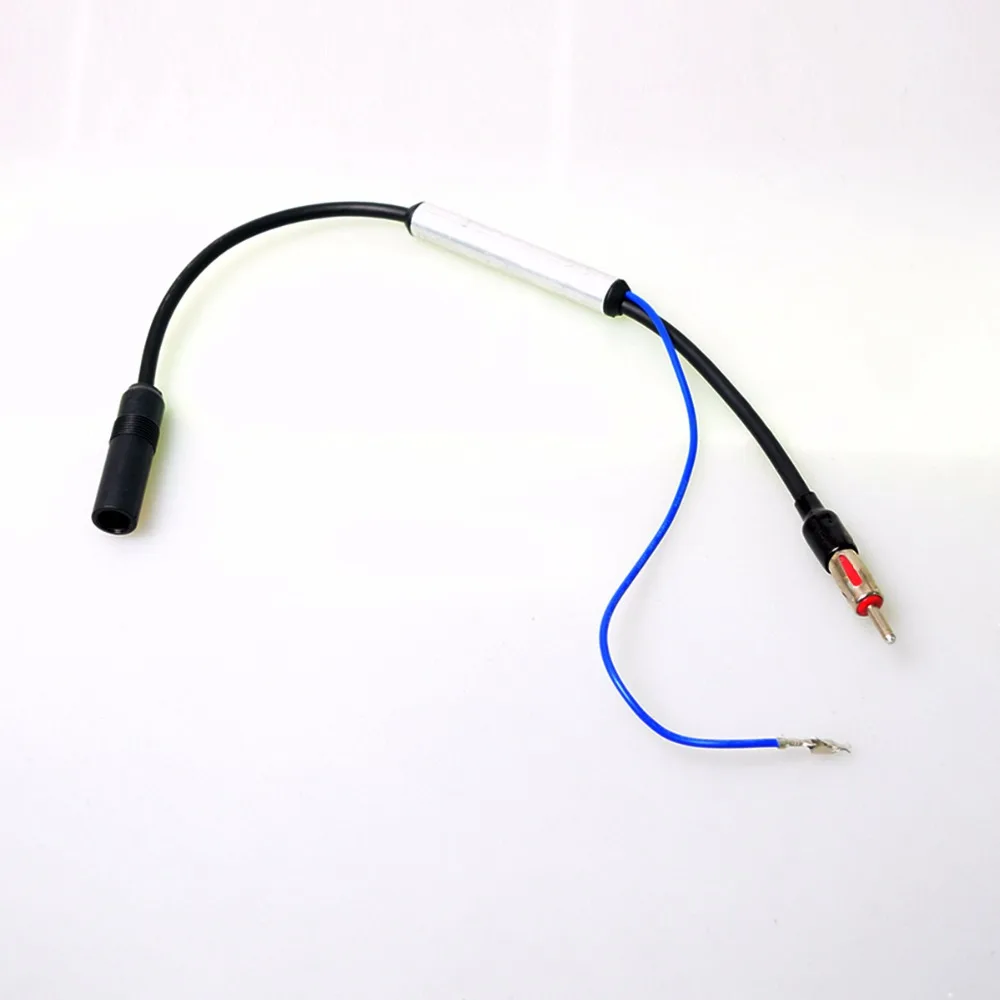


You could prefer to place the finished small device in a plastic box for durability. You may also manually scrap the copper pads by creating parallel incisions with a scalpel blade knife from around edges of each pad and meticulously taking off the thin strips between the broken lines.Įxamine the narrow channels with a magnifying lens and an ohmmeter to ensure you don't have any copper burrs between the isolated copper pads that might create an undesired electrical shorting.
#Car radio antenna booster diy portable#
If you're assembling your own stripboard, use a portable power drill with a fine abrasive disc or circular saw in the tool barrel to eliminate the thin strips of copper foil that constitute the isolated pads over the stripboard. Wind a 2.5 inch long 20 AWG bare copper wire 1.5 turns around a 3/8-inch diameter spindle or drill bit to make each of those coils. L1 and L2, which are pair of hand-wound air-core coils, are employed in the circuit. You may get a completed circuit board from any appropriate vendor, or you could just make it yourself on a stripboard. The circuit parts are installed on a glass-epoxy circuit board with copper foil cladding and a thickness of 0.040 inch. The power supply is filtered and stabilized by capacitors C6 and C7 connected across battery input. Switch S1 supplies power to the adjustable FM booster, through a regular 9-volt transistor battery. The totally amplified RF signal is subsequently sent to the FM receiver's antenna via a wire approximately 8 inches long terminating with a crocodile clip from the L2- C2 junction. The following stage's parts are the same as the first, and the frequency is governed by L2- C2 in the collector circuit. Thereafter, the preamplified signal is delivered to the base of Q2 via C4. The pairing of coil L1 and capacitor C1, which is linked to the collector of the transistor by C3, tunes the circuit to the receiving input signal. The signal from the V-shaped antenna is supplied into Q1's first stage, which is adjusted to provide maximum gain through R1. It has a couple of BC547 NPN transistors, Q1 and Q2, that can operate at 250 MHz. The proposed FM radio antenna booster circuit is a two-stage radio-frequency amplifier, as illustrated in the design in the following figure. When listening to nearby powerful broadcast FM channels, you should turn off the booster to avoid audio "swamping." How the Circuit Works Once you connect the circuit, you'll need to do a few easy adjustments. While you may be able to use pliers to pull out a failed electric antenna, doing so may strip the gears or damage the motor.The FM radio's retractable antenna is hooked up to the input side of the booster, and the increased signal is transmitted to it through a single cable. And since a lot of these antennas are outside your normal field of vision, you may not even notice that the motor is broken unless you specifically go looking for it. It’s especially common for car wash attendants to push these in to keep them from breaking off in the wash, and if someone doesn’t remember to pull it back out on the other side, it’s pretty easy to just drive away none the wiser.Įlectric antennas that extend when the radio is turned on can also fail in the down position, in which case your radio reception will probably be pretty bad. Since there isn’t any mechanism to prevent these masts from being retracted, anyone can walk by and shove your antenna down.
#Car radio antenna booster diy manual#
This may sound like extremely basic stuff, but it’s actually surprisingly common for manual antennas to be retracted and then left that way. Pulling it back out, if you find it shoved in, may be all it takes to vastly improve your reception. Since antennas function by picking up radio waves, it only stands to reason that being shoved down inside the car might make it difficult for your antenna to function correctly. Whatever the case, if you have a retractable mast and your reception has been awful lately it's definitely worth checking this first. There are a lot of ways that a manual antenna mast can end up pushed in, like if a car wash attendant forgot to pull it back out, or maybe a large bird decided to perch on it.


 0 kommentar(er)
0 kommentar(er)
